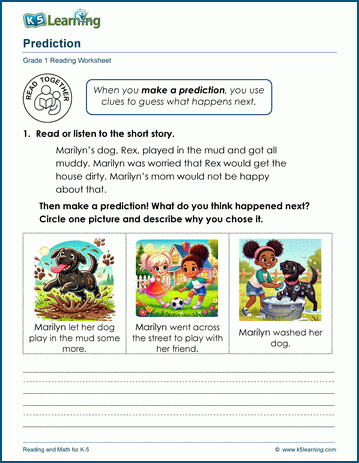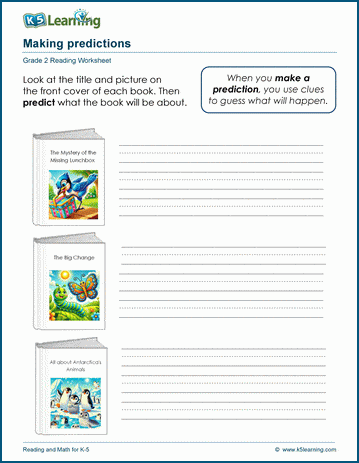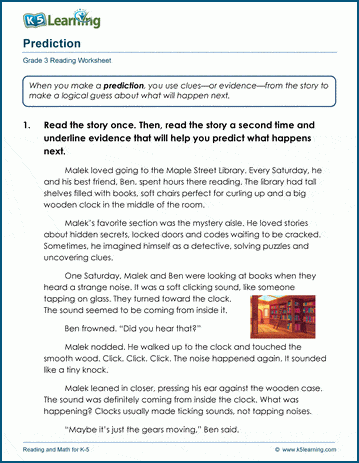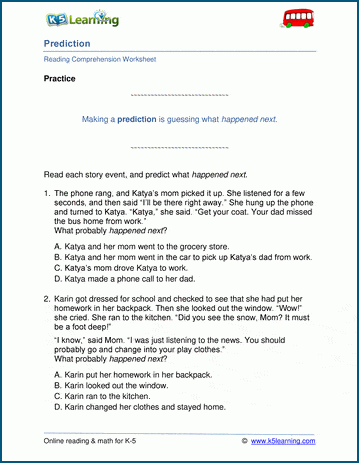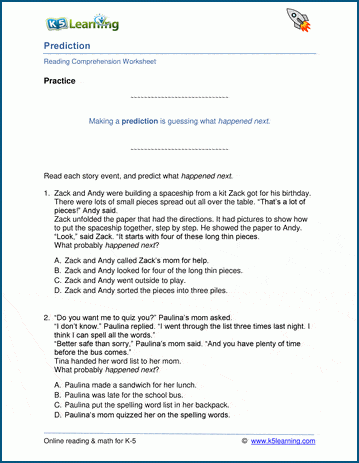Predicting what happens next is an important skill for kids to learn for reading comprehension. To make predictions, students use information, such as titles, pictures, diagrams and clues in the first part of a text to help them anticipate what will happen next.
Why is prediction important to learn?
Learning to tell what happens next helps kids improve their reading comprehension. Students who are able to make predictions about a text are more actively involved in the reading process and understand the text better.
To determine if their predictions are correct, students should reread the text to recall the facts about the information, characters or events within that text.
Over time, as students reflect on and evaluate texts, by first predicting and then reviewing that text, they learn to make connections between their prior knowledge, process the content better and gain deeper reading comprehension skills.
Prediction worksheets
Learning to predict starts as early as grade 1 and is then revisited in every grade. To support this learning, we have created a series of prediction worksheets for grades 1 to 5.
Grade 1 prediction worksheets
In grade 1, students read a simple text and identify the picture that shows what will happen next.
What happens next for grade 2
In grade 2, students use more clues, such as book titles to predict what the book is about.
Prediction exercises for grade 3 students
Grade 3 students move onto clues in a text to make their predictions.
Grade 4 short stories for prediction practice
Grade 4 students continue building on their grade 3 knowledge with harder texts to predict.
Grade 5 stories to predict what happens next
Grade 5 students work on more complex text clues to work out what happened next.

